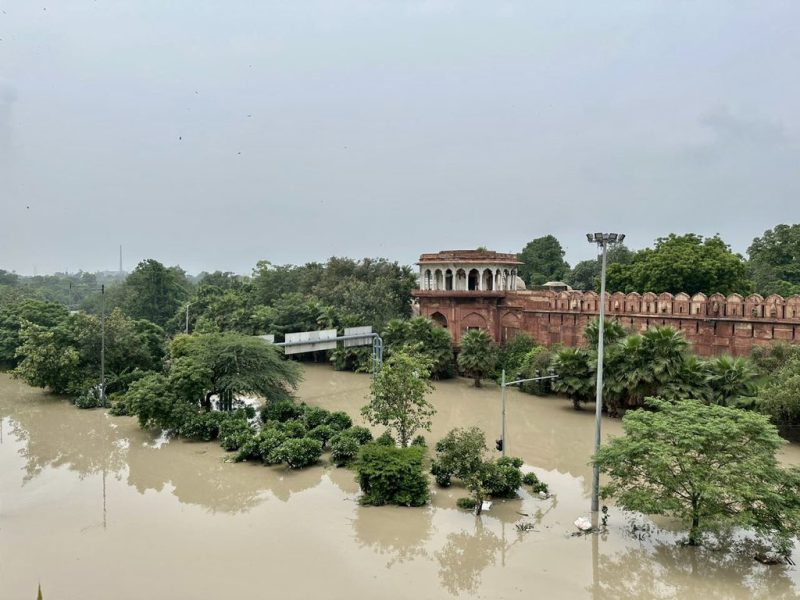
Heavy rainfall in Uttarakhand, upper reaches to soar up Yamuna: IMD

The water level of the Yamuna in Delhi, which has been hovering around the danger mark of 205.33 metres for the last few days, dropped below the threshold again on Saturday morning.
However, fresh spells of heavy rain have been reported in parts of Uttarakhand and it may lead to a rise in the river water level again, further delaying rehabilitation efforts in the flood-affected low-lying areas of Delhi. The India Meteorological Department (IMD) has predicted heavy to very heavy rain in parts of Himachal Pradesh and Uttarakhand till July 25.
The Central Water Commission (CWC) data showed that the water level dropped from 205.34 metres at 6 pm on Friday (July 21) to 205.29 metres at 9 am on Saturday (July 22). It may drop further before the impact of rain in upper catchment areas becomes clear. According to CWC data, the flow rate at the Yamunanagar-located Hathnikund Barrage was 1.47 lakh cusecs at 9 am, the highest since July 13.
Also read: Delhi floods: Farmlands, shanties, shops inundated, evacuated people stare at bleak future
Marginal fluctuations
“Rains in the upper catchment areas are subsiding and the discharge from the Hathnikund Barrage should not cross the 3 lakh cusec mark. CWC hydrographs do not show much rise in the rivers in the hills except Bata river,” Bhim Singh Rawat, associate coordinator of the South Asia Network on Dams, Rivers and People, said.
There have been marginal fluctuations in the water level over the last four to five days amid rain in the upper catchment areas, primarily in Himachal Pradesh and Uttarakhand. In case of heavy rains upstream of Delhi, the increase in the water level could slow down the pace of rehabilitation of the affected families in the inundated low-lying areas of the capital and they may have to stay in relief camps for a longer period.
It could also impact the water supply in the city, which became normal only on Tuesday (July 18) after being affected for four to five days due to the inundation of a pump house at Wazirabad. The pump house supplies raw water to Wazirabad, Chandrawal and Okhla water treatment plants, which together account for around 25 per cent of the city’s water supply.
Delhi waterlogged
Parts of Delhi have been grappling with water-logging and flooding for more than a week now. Initially, a downpour caused intense water-logging on July 8 and 9, with the city receiving 125 per cent of its monthly rainfall quota in just two days. Subsequently, heavy rains in the upper catchment areas of the Yamuna, including in Himachal Pradesh, Uttarakhand and Haryana, led to the river swelling to record levels.
Also read: Landslides bring traffic on highway to a standstill, yatri convoy stranded
At 208.66 metres on July 13, the Yamuna surpassed its previous record of 207.49 metres set in September 1978 by a significant margin. It breached embankments and penetrated deeper into the city than it has in over four decades.
The consequences of the floods have been devastating, with more than 27,000 people evacuated from their homes. The losses incurred in terms of property, businesses and earnings run up to crores. Experts attribute the unprecedented flooding in Delhi to encroachment on the river floodplain, extreme rainfall within a short span of time and silt accumulation that has raised the riverbed.
(With agency inputs)

